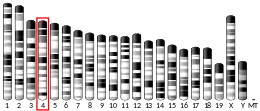C1orf127
Uncharactarized protein C1orf127 is a protein that in humans is encoded by the C1orf127 gene, the structure and function of which is poorly understood by the scientific community. C1orf127 is targeted for extracellular secretion in humans.
| C1orf127 | |||||||||||||||||||||||||||||||||||||||||||||||||||
|---|---|---|---|---|---|---|---|---|---|---|---|---|---|---|---|---|---|---|---|---|---|---|---|---|---|---|---|---|---|---|---|---|---|---|---|---|---|---|---|---|---|---|---|---|---|---|---|---|---|---|---|
| Identifiers | |||||||||||||||||||||||||||||||||||||||||||||||||||
| Aliases | C1orf127, chromosome 1 open reading frame 127 | ||||||||||||||||||||||||||||||||||||||||||||||||||
| External IDs | MGI: 2685418 HomoloGene: 52134 GeneCards: C1orf127 | ||||||||||||||||||||||||||||||||||||||||||||||||||
| |||||||||||||||||||||||||||||||||||||||||||||||||||
| |||||||||||||||||||||||||||||||||||||||||||||||||||
| |||||||||||||||||||||||||||||||||||||||||||||||||||
| |||||||||||||||||||||||||||||||||||||||||||||||||||
| Wikidata | |||||||||||||||||||||||||||||||||||||||||||||||||||
| |||||||||||||||||||||||||||||||||||||||||||||||||||
Gene
C1orf127 is located on the short arm of Chromosome 1 (1p36.22), spanning 35,566 base pairs from 10946471 to 10982037. It is oriented on the minus strand of the chromosome.
mRNA
The primary assembly has 13 exons, and yields an 823 amino acid protein product. There are two known isoforms caused by alternative splicing.[5]
Protein
C1orf127’s protein product is a member of the Ensembl protein family TF607005.[6] The primary assembly weighs 89 kDa with an isoelectric point of 5.54, making it both longer and heavier than the average protein.[7]
Domains and Motifs
C1orf127 is contains two protein domains: DUF4556 and PHA03247, a domain in the Atrophin-1 superfamily.[8] The functions of both domains are unknown. The protein also appears to have a cleavable signal peptide from Met1 to Pro18.[9]
Subcellular Localization
The protein C1orf127 is suggested to be localized to the extracellular matrix in humans.[9]
Post-Translational Modifications
C1orf127 undergoes N and O-linked glycosylation, and contains a number of potential phosphorylation sites.
Protein-Protein Interactions
C1orf127 is suggested to interact with two different proteins, CCT3, a molecular chaperone, and CCT6B, also a molecular chaperone found in the testis. Because these interacting proteins are both molecular chaperones, it is possible that C1orf127 must undergo chaperone-assisted folding or unfolding.
Expression
C1orf127 is not constitutively expressed, but it is expressed at low to medium levels in a variety of tissues. Greatest expression is observed in the stomach and pancreas.[10] It is also thought to be expressed in certain areas of both the developing and adult brain, such as the cerebellum, as well as skeletal muscle tissue, the testis, cardiac muscle, and throughout the digestive system.
Little else is known about this gene’s expression, however a 2012 paper published in the World Journal of Gastroenterology suggested that it’s mis-expression could be used as a diagnostic marker locus in the detection of cancer[11]
Evolutionary History
| DUF4556 | |||||||||
|---|---|---|---|---|---|---|---|---|---|
| Identifiers | |||||||||
| Symbol | DUF4556 | ||||||||
| Pfam | PF15094 | ||||||||
| InterPro | IPR027956 | ||||||||
| |||||||||
C1orf127 has no paralogs within the human genome, however a number of orthologs have been identified, ranging across the jawed vertebrates, including a number of other mammals, marsupials, amphibians, and fish. One of the most distant ortholog identified is found in Danio rerio. Thus, the ancestor of C1orf127 likely arose around 435 MYA.
| Species | NCBI Accession Number | Sequence Length | Identity to Human |
|---|---|---|---|
| Papio anubis | XP_021791537.1 | 769 | 89% |
| Saimiri boliviensis boliviensis | XP_010344835.1 | 817 | 79% |
| Octodon degus | XP_023555153.1 | 514 | 55% |
| Jaculus jaculus | XP_004657440.1 | 820 | 53% |
| Heterocephalus glaber | XP_021099206.1 | 811 | 55% |
| Echinops telfairi | XP_012860770.1 | 766 | 65% |
| Chrysochloris asiatica | XP_006866497.1 | 513 | 58% |
| Oryctolagus cuniculus | XP_017195816.1 | 696 | 58% |
| Chinchilla lanigera | XP_005404362.1 | 778 | 55% |
| Loxodonta africana | XP_023408259.1 | 1129 | 52% |
| Sarcophilus harrisii | XP_023344649.1 | 1088 | 56% |
| Phascolarctos cinereus | XP_020835267.1 | 818 | 53% |
| Xenopus laevis | XP_018081142.1 | 690 | 46% |
| Haplochromis burtoni | XP_00591528.1 | 564 | 34% |
| Lates calcarifer | XP_018521386.1 | 360 | 39% |
| Lepisosteus oculatus | XP_015192693.1 | 820 | 40% |
| Acanthochromis polyacanthus | XP_022062388.1 | 397 | 36% |
| Oncorhynchus mykiss | CDQ71724.1 | 496 | 35% |
| Danio rerio | XP_021325672.1 | 328 | 40% |
| Astyanax mexicanus | XP_022532665.1 | 662 | 36% |
References
- GRCh38: Ensembl release 89: ENSG00000175262 - Ensembl, May 2017
- GRCm38: Ensembl release 89: ENSMUSG00000070577 - Ensembl, May 2017
- "Human PubMed Reference:". National Center for Biotechnology Information, U.S. National Library of Medicine.
- "Mouse PubMed Reference:". National Center for Biotechnology Information, U.S. National Library of Medicine.
- "C1orf127 chromosome 1 open reading frame 127 [ Homo sapiens (human) ]". National Center for Biotechnology Information. Retrieved 18 February 2018.
- "Gene: C1orf127". Ensembl. Retrieved 19 February 2018.
- Lodish H, Berk A, Matsudaira P, Kaiser CA, Krieger M, Scott MP, Zipurksy SL, Darnell J (2004). Molecular Cell Biology (5th ed.). New York, New York: WH Freeman and Company.
- "Conserved domains on uncharacterized protein precursor C1orf127". National Center for Biotechnology Information.
- "PSORT II". PSORT II Prediction. Retrieved 6 May 2018.
- "C1orf127 chromosome open reading frame 127 [Homo sapiens (human)]". Retrieved 19 February 2018.
- Liu YY, Chen HY, Zhang ML, Tian D, Li S, Lee JY (September 2012). "Loss of fragile histidine triad and amplification of 1p36.22 and 11p15.5 in primary gastric adenocarcinomas". World Journal of Gastroenterology. 18 (33): 4522–32. doi:10.3748/wjg.v18.i33.4522. PMC 3435777. PMID 22969225.



